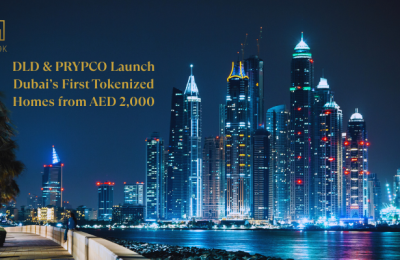Where to Invest in Dubai: Top Property Hotspots & Emerging Growth Zones for H2 2025
Dubai's property market continues to capture global investor attention, and all signs indicate that the second half of 2025 will be a golden period for real estate opportunities. With a predicted price correction, increased off-plan activity, and new luxury developments on the horizon, savvy investors are eyeing H2 2025 as a strategic entry point.

Following a robust 60% surge in prices between 2022 and early 2025, experts—including Fitch Ratings—forecast a moderate dip in prices of up to 15% due to an anticipated influx of over 210,000 new residential units. This correction presents a rare "buy-the-dip" moment for investors, particularly in premium neighborhoods such as Palm Jumeirah, Downtown Dubai, and Dubai Hills. Buying at the low could yield substantial rental income or capital appreciation when the next uptrend begins.
Off-plan property remains a dominant force in Dubai's real estate landscape. Over 60% of property transactions in 2024 were off-plan, and the momentum continues into 2025. Developers are fueling interest by offering attractive post-handover payment plans, often requiring just 10% to 20% upfront. This trend is making luxury townhouses and apartments more accessible to investors and end-users alike. Hotspots like Dubai Creek Harbour, Expo City, and DAMAC Lagoons are leading the charge with smart, sustainable, and future-ready communities.

The appeal of waterfront living continues to be a major driver of investment. Palm Jumeirah remains at the top of capital growth and rental yield charts, with luxury villa and penthouse prices having climbed up to 40% in the last two years. Similarly, Dubai Marina and Jumeirah Beach Residence (JBR) remain favorites among expatriates due to their lifestyle offerings and stable returns. Emerging waterfront areas like Dubai Creek Harbour, especially with the anticipated launch of the new Creek Tower, are fast becoming desirable destinations for long-term investment.
Dubai is also making waves in the ultra-luxury segment with branded residences. One standout project is the newly announced Jumeirah Residences at Emirates Towers, expected to feature over 750 ultra-modern apartments by 2030. The city's skyline is further evolving with headline-grabbing developments like the Bugatti Residences, where global celebrities like Neymar have secured high-end units valued at over $50 million. These iconic addresses blend architectural excellence with brand cachet, driving both demand and long-term property value.
While luxury gets the spotlight, mid-income and suburban communities are quietly delivering strong returns. Suburban zones like Jumeirah Village Circle (JVC), Al Furjan, Dubai South, and Arabian Ranches have witnessed price increases of 20% to 35% year-on-year. These areas are increasingly popular with younger families and first-time buyers, offering more space, community amenities, and better affordability. The rental yields in these suburban locations remain highly competitive—often reaching 8% to 11%.
From a regulatory standpoint, Dubai continues to enhance transparency and investor confidence. The Golden Visa program, available to property buyers with investments of AED 2 million and above, remains a significant draw for international investors. Dubai also offers a no-property-tax and no-capital-gains-tax environment—key differentiators in the global market. Moreover, new rules requiring 40–50% payment before off-plan resales have helped prevent speculative bubbles and added more trust to the transaction process. Tools like the Dubai Smart Rental Index are also enhancing market clarity for both tenants and landlords.
Infrastructure development is another major catalyst supporting Dubai’s real estate rise. The planned relocation of Dubai International Airport (DXB) to Dubai South is reviving investor interest in surrounding areas. Ongoing metro extensions, road expansions along Sheikh Zayed Road, and improvements to public transport accessibility are making once-overlooked zones like Al Jaddaf and Jebel Ali more attractive. With Dubai’s population projected to grow by over 160,000 in 2025 alone, demand for housing across all segments remains solid.
Here are the top five hotspots investors should watch in H2 2025. Palm Jumeirah leads with unmatched luxury and consistent price growth. Dubai Marina and JLT continue to attract high rental demand from the expat community. Downtown Dubai and Business Bay provide prestige and iconic lifestyle appeal. Dubai Creek Harbour and Expo City offer futuristic living backed by smart infrastructure and waterfront views. Meanwhile, suburbs like JVC, Al Furjan, and Dubai South cater to families and mid-income investors seeking high yields and long-term value.
To capitalize on the H2 2025 momentum, investors should act decisively. Buying during the price dip can position portfolios for strong appreciation. Off-plan opportunities with developer incentives should be carefully explored. Whether your focus is luxury prestige, suburban value, or waterfront lifestyle, the Dubai real estate market has something for every profile. Investors should also take advantage of regulations like the Golden Visa and zero-tax benefits while they last.
In conclusion, H2 2025 is not just another quarter—it could be a once-in-a-cycle opportunity to gain a foothold in one of the world’s most dynamic real estate markets. With balanced supply-demand dynamics, developer-backed offerings, and world-class infrastructure, Dubai continues its transformation into a truly global property investment powerhouse. The time to act is now—before the market takes its next big leap.
Disclaimer: Content on this blog is for informational purposes only and should not be considered legal, financial, or investment advice. Market conditions and regulations may change; please consult qualified professionals before making property decisions. Hanok International Real Estate is not liable for any actions taken based on this information.
News insight
 Aug 30, 2025
Aug 30, 2025
Dubai Real Estate Surge 9800 Millionaires to Relocate in 2025 with Record 116M Villa Sale
Dubai’s luxury real estate booms with 9,800 millionaires relocating in 2025, fueling a $116M villa s...
 Aug 30, 2025
Aug 30, 2025
Dubai Property Expo Surat The Most Prestigious Investment Event of 2025
Join Hanok International at Dubai Property Expo Surat on Aug 23-24, 2025. Explore Dubai’s luxury rea...
 Aug 14, 2025
Aug 14, 2025
DLD & PRYPCO Launch Dubai’s First Tokenized Homes from AED 2,000
Dubai's DLD & PRYPCO launch a real estate tokenization platform, enabling global investors to buy pr...

